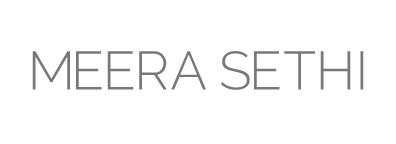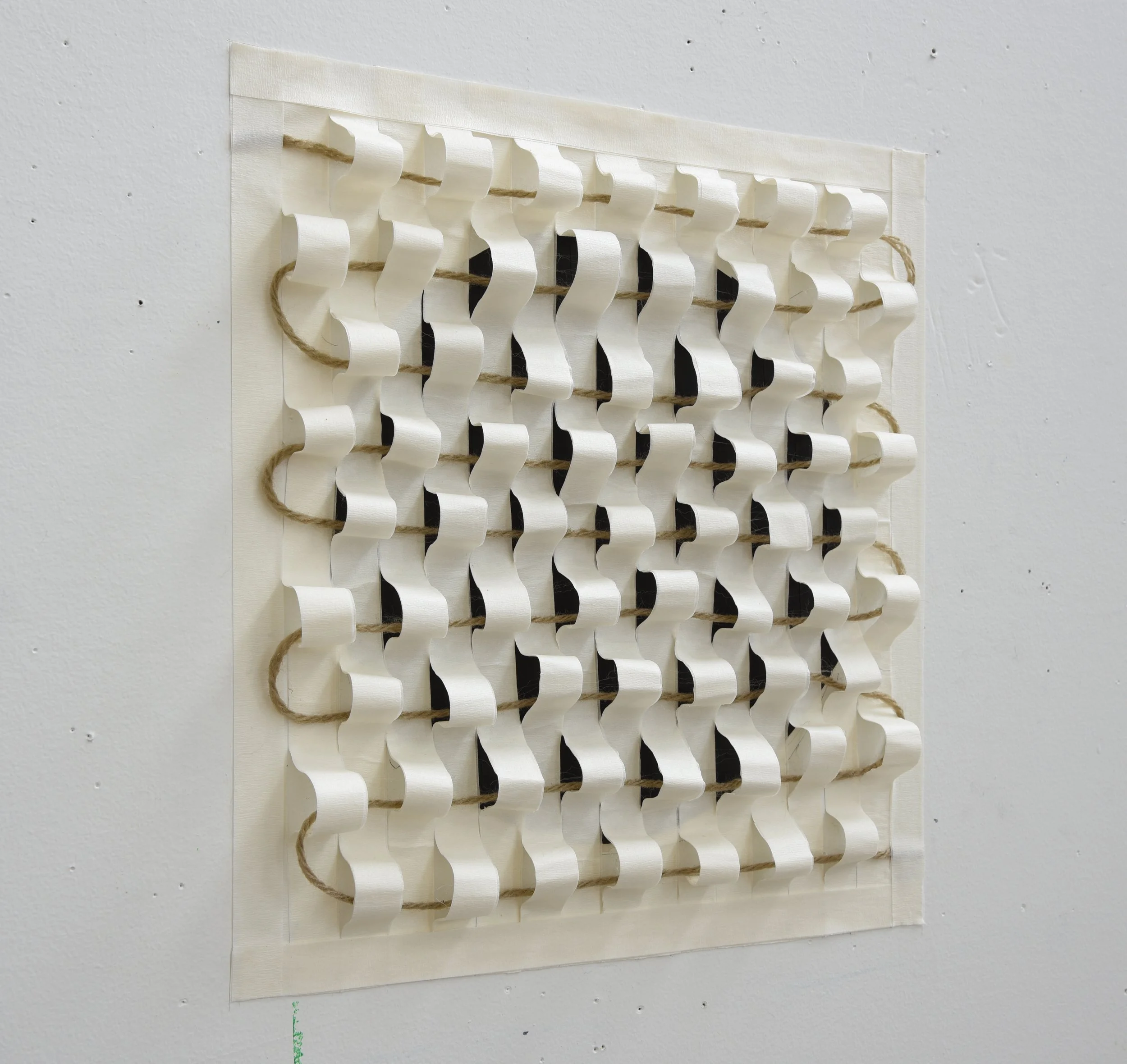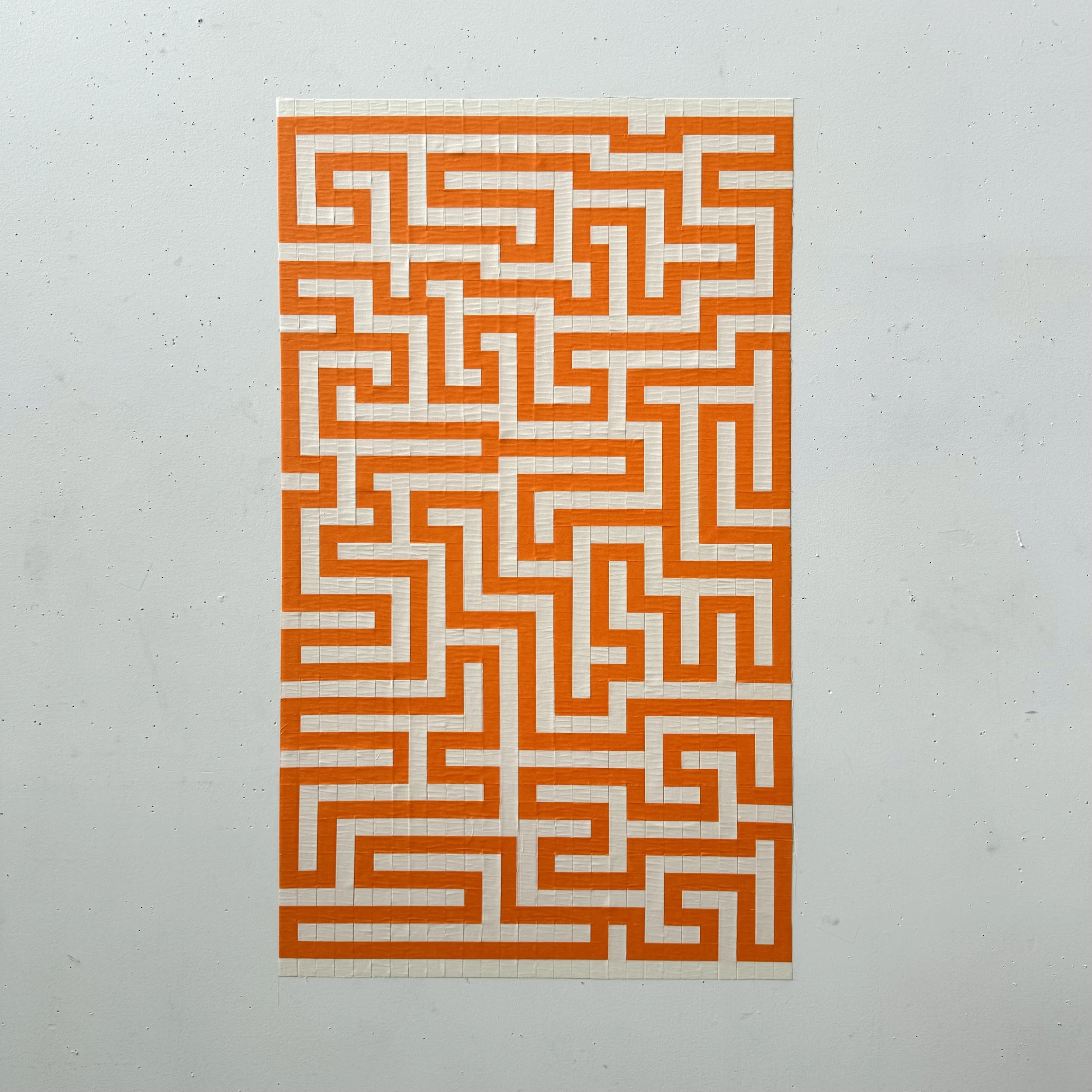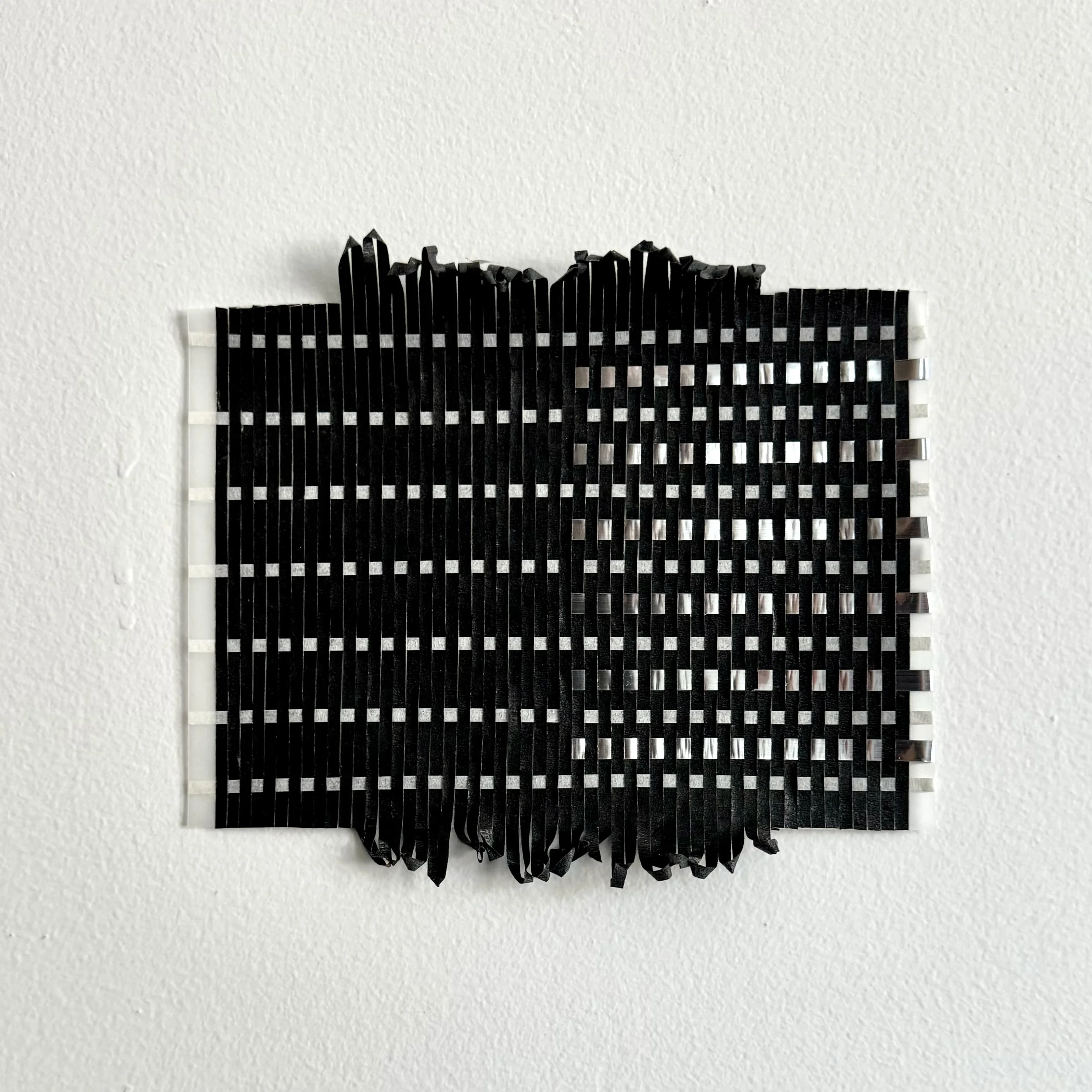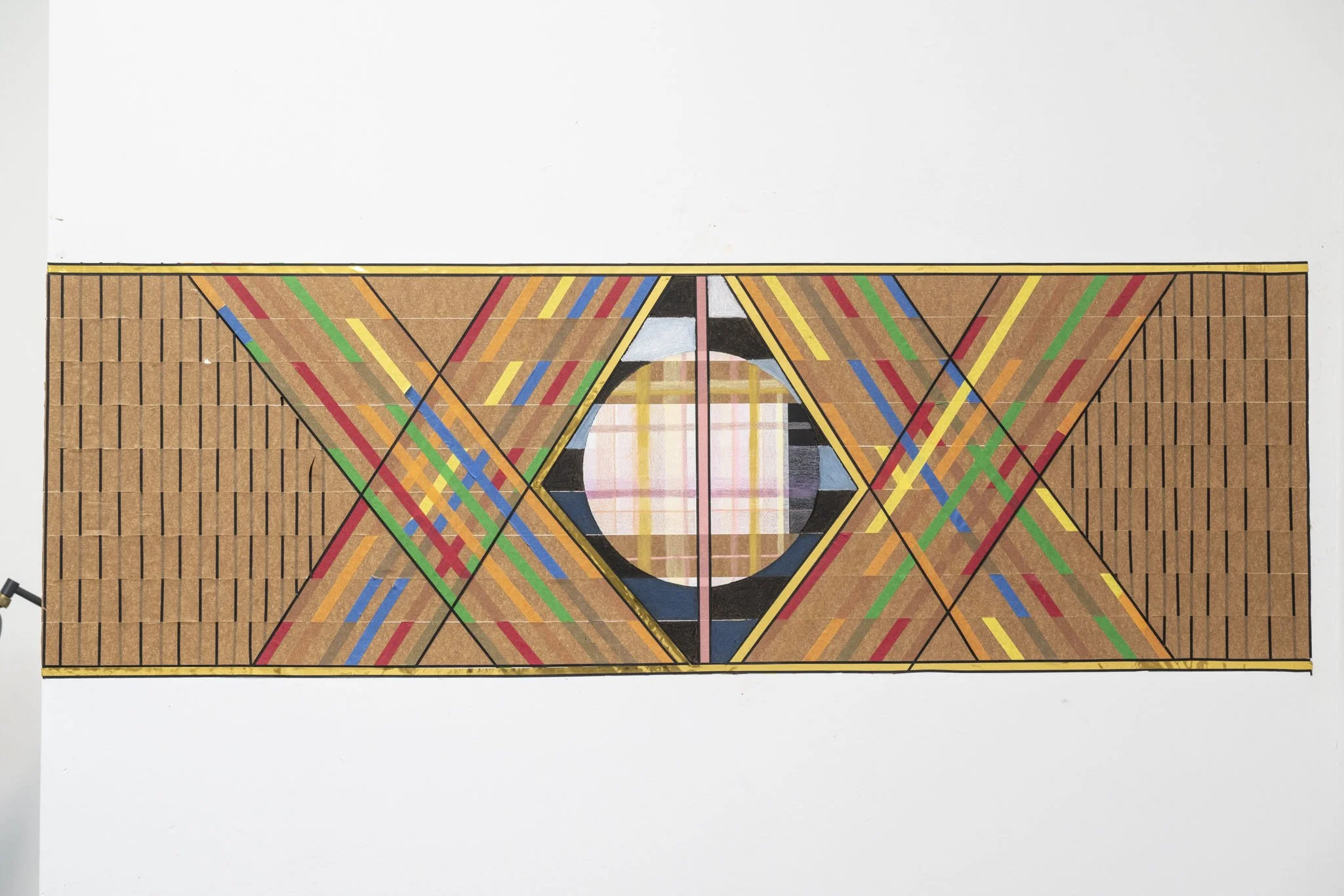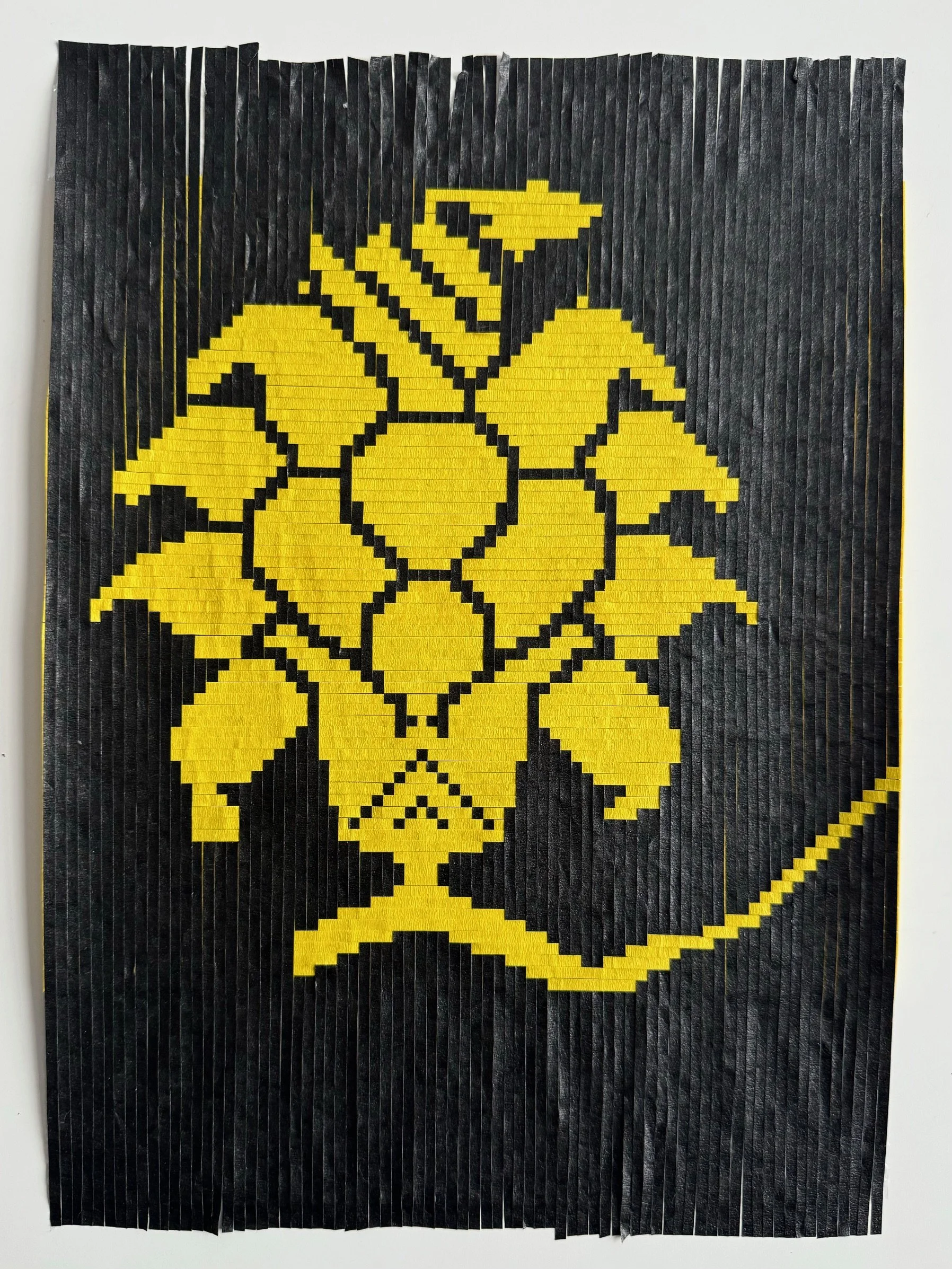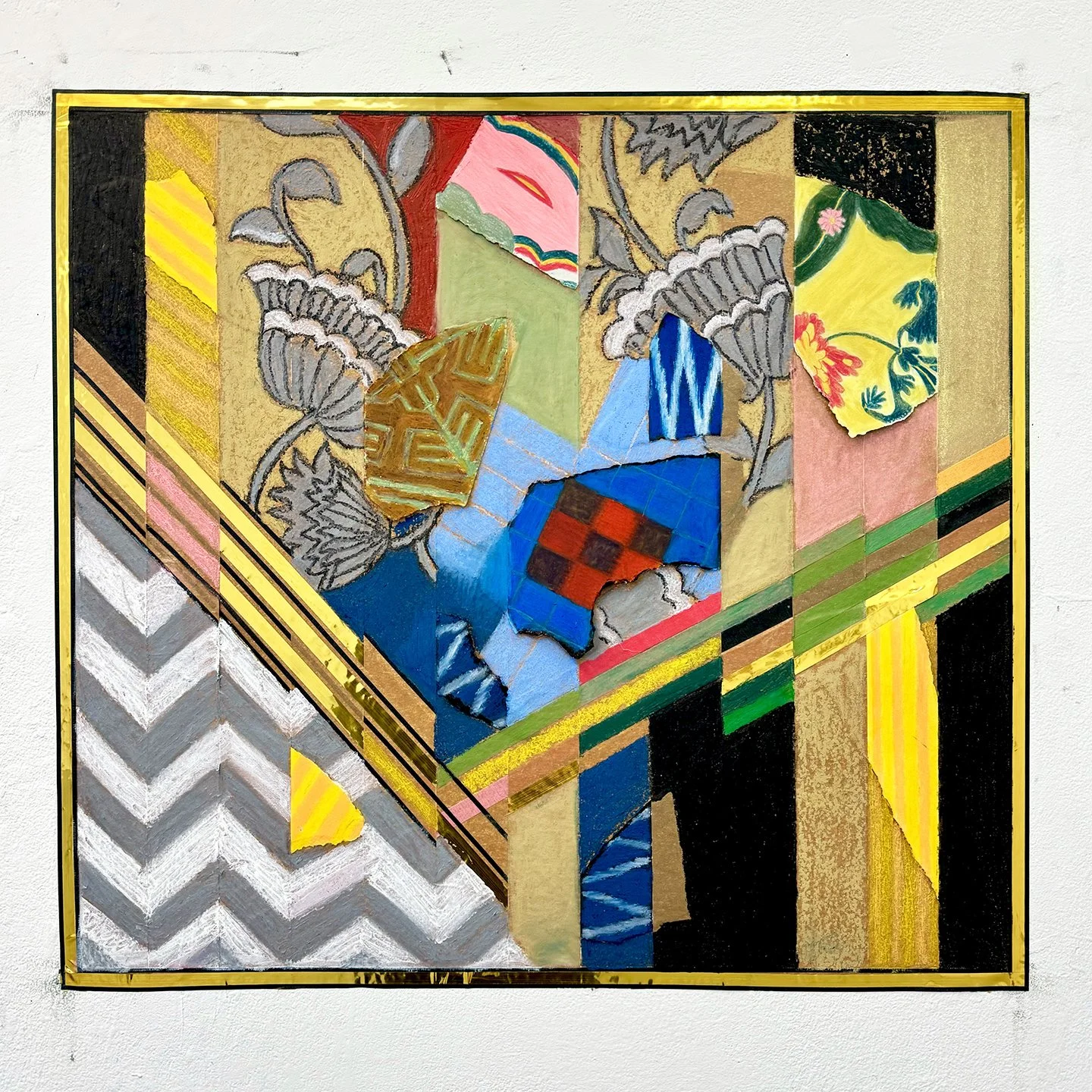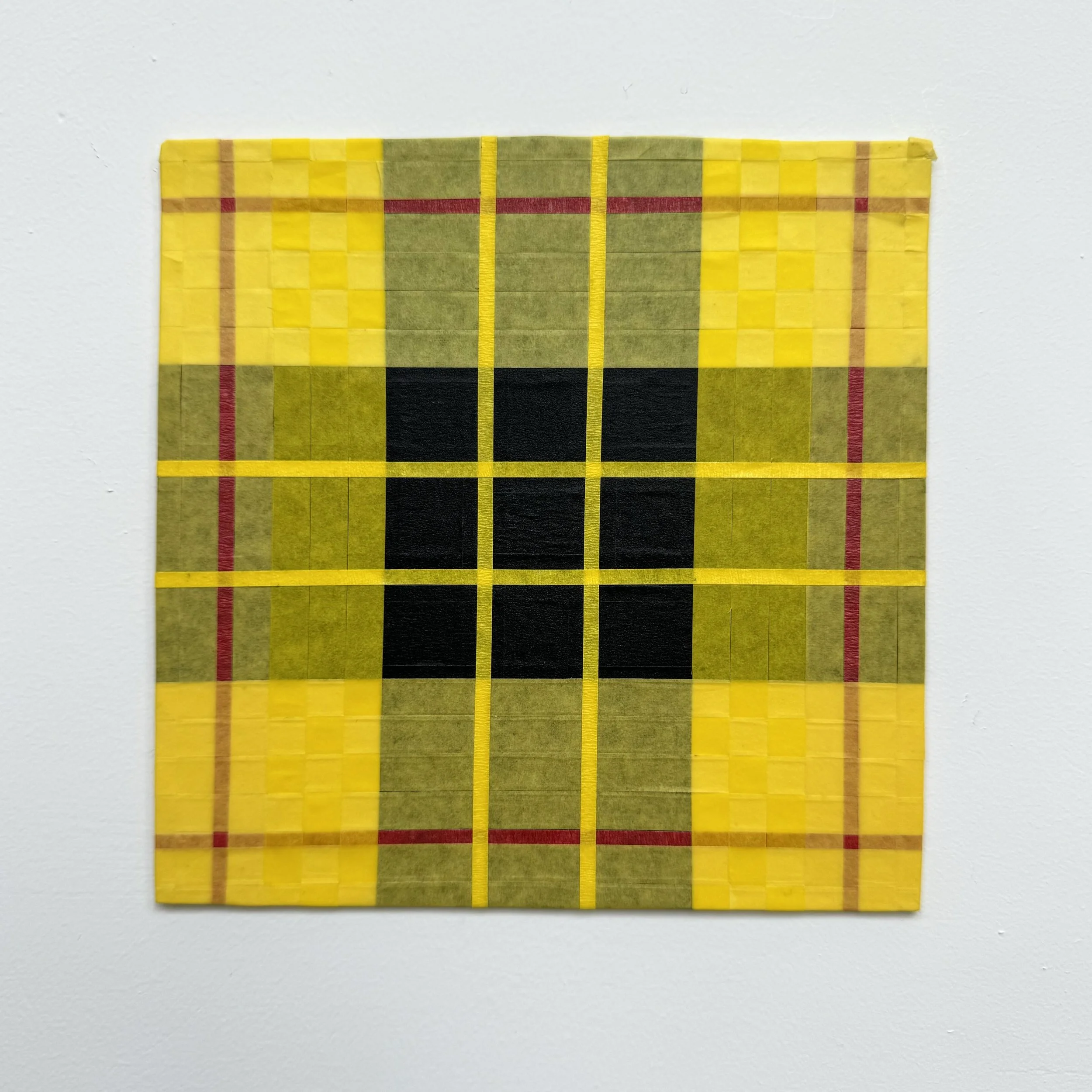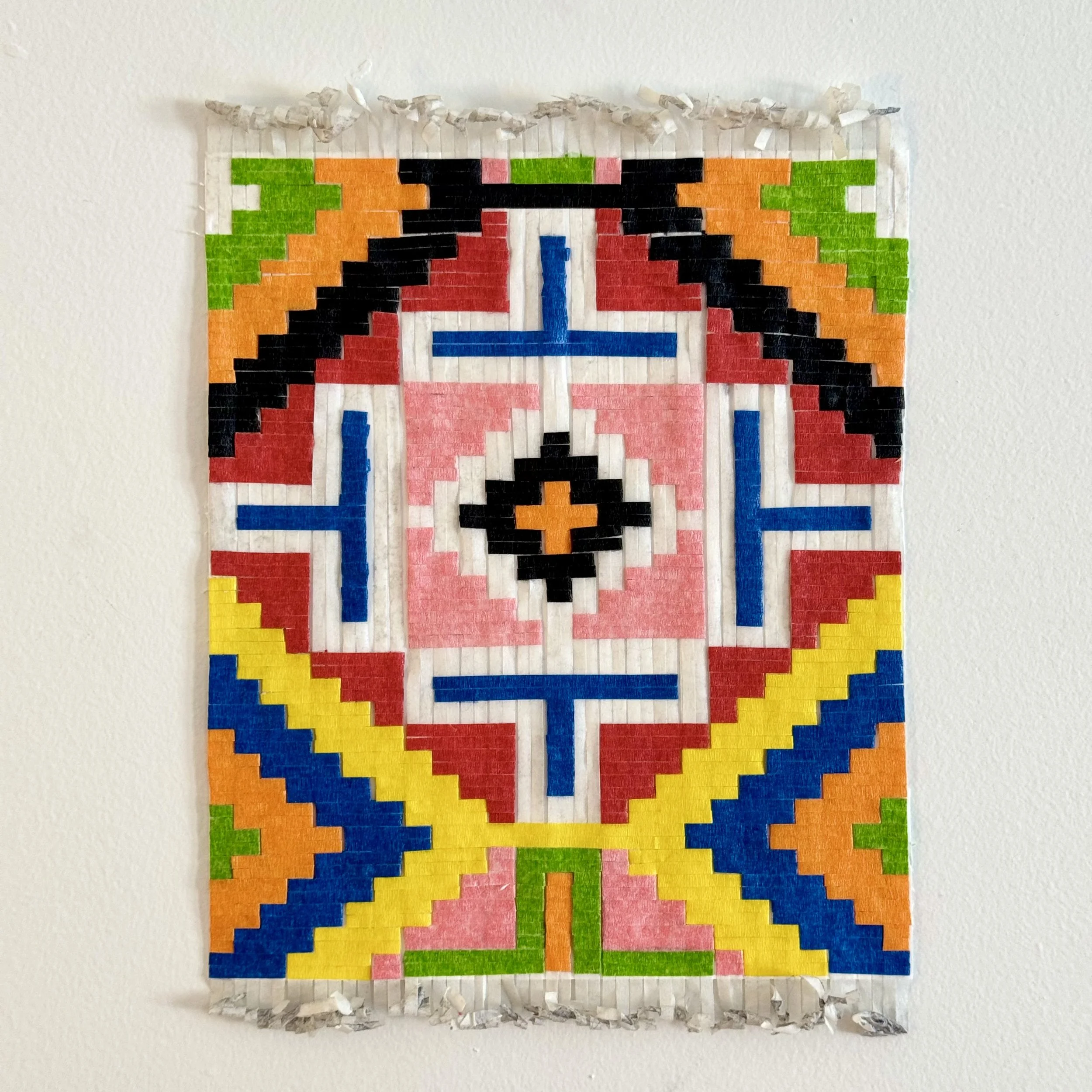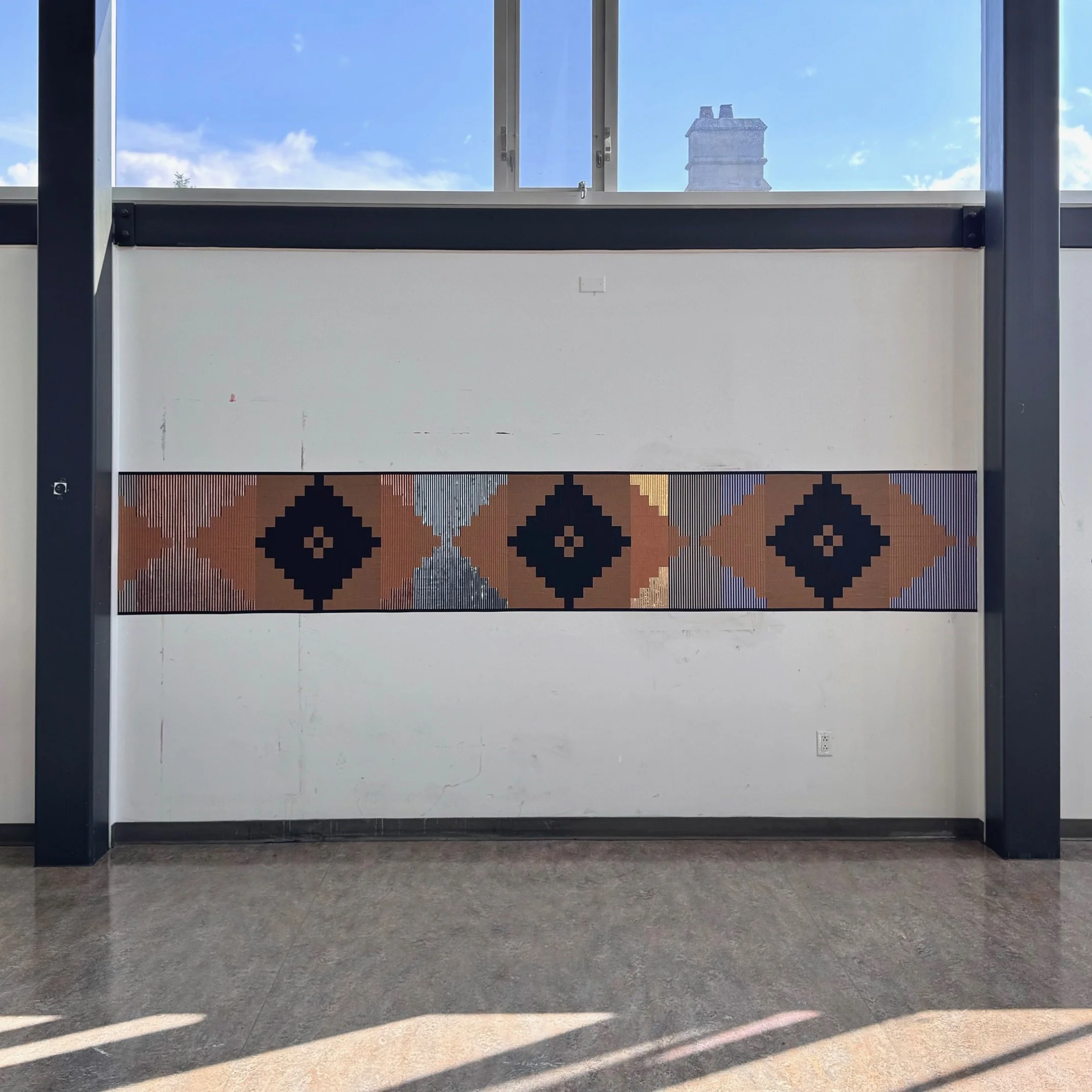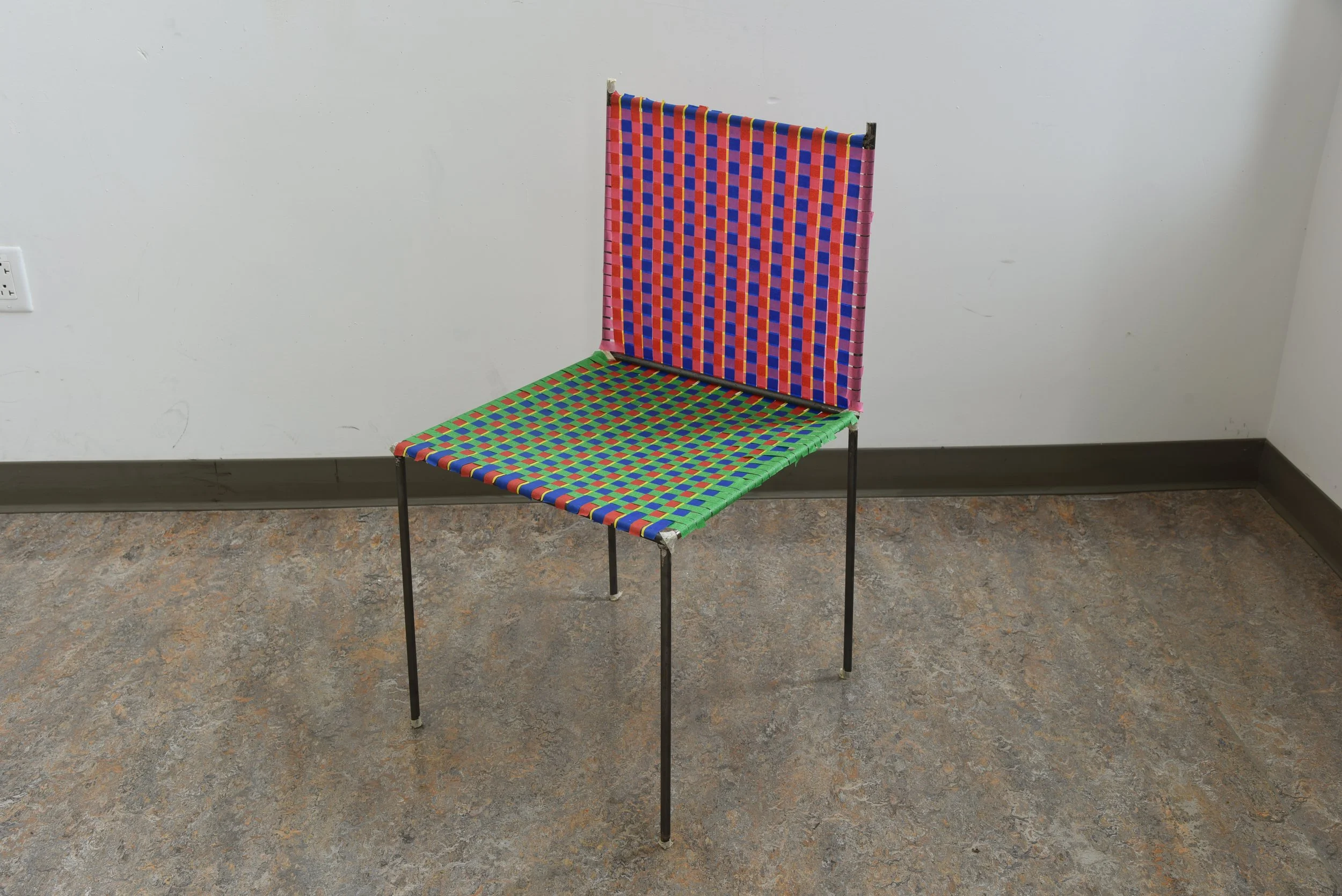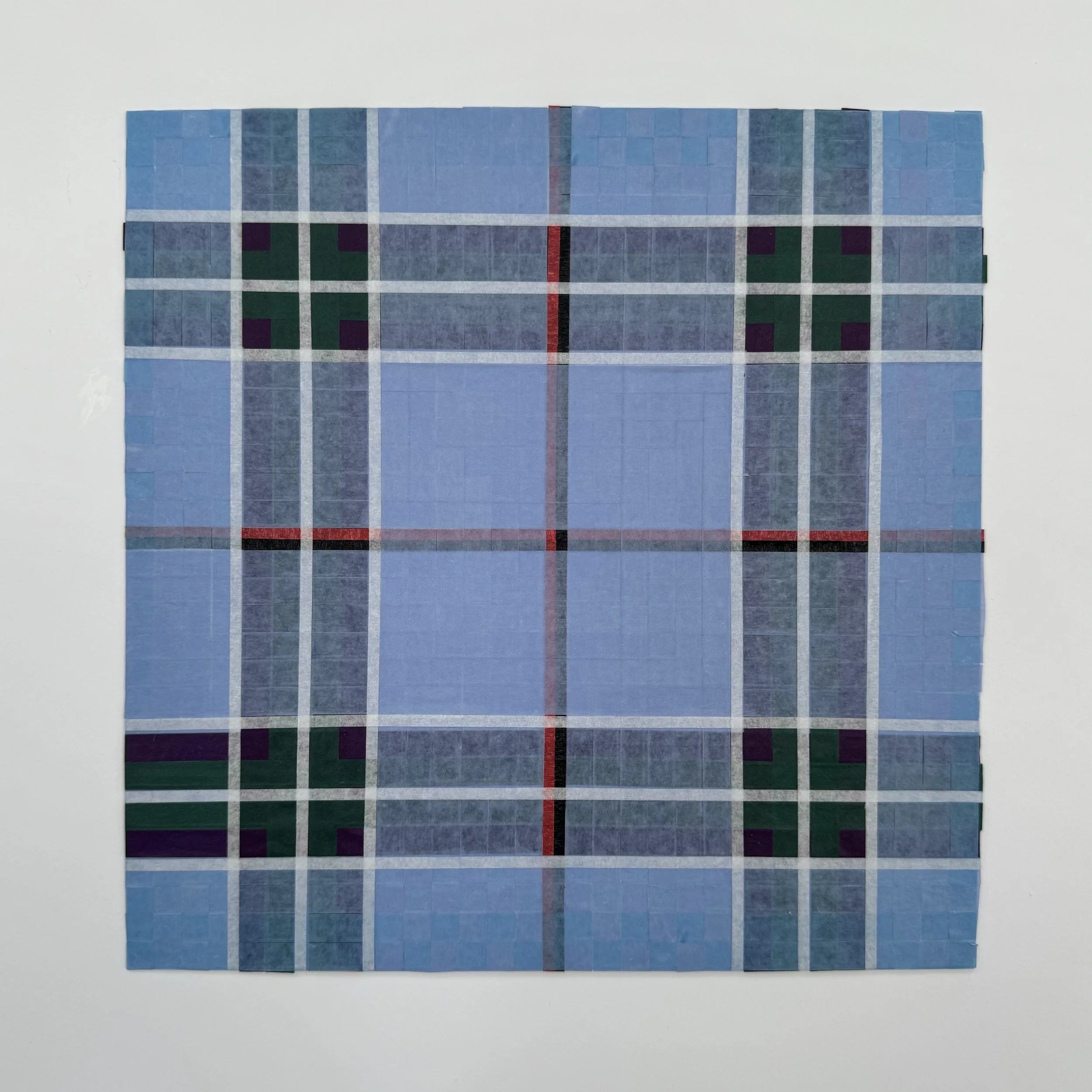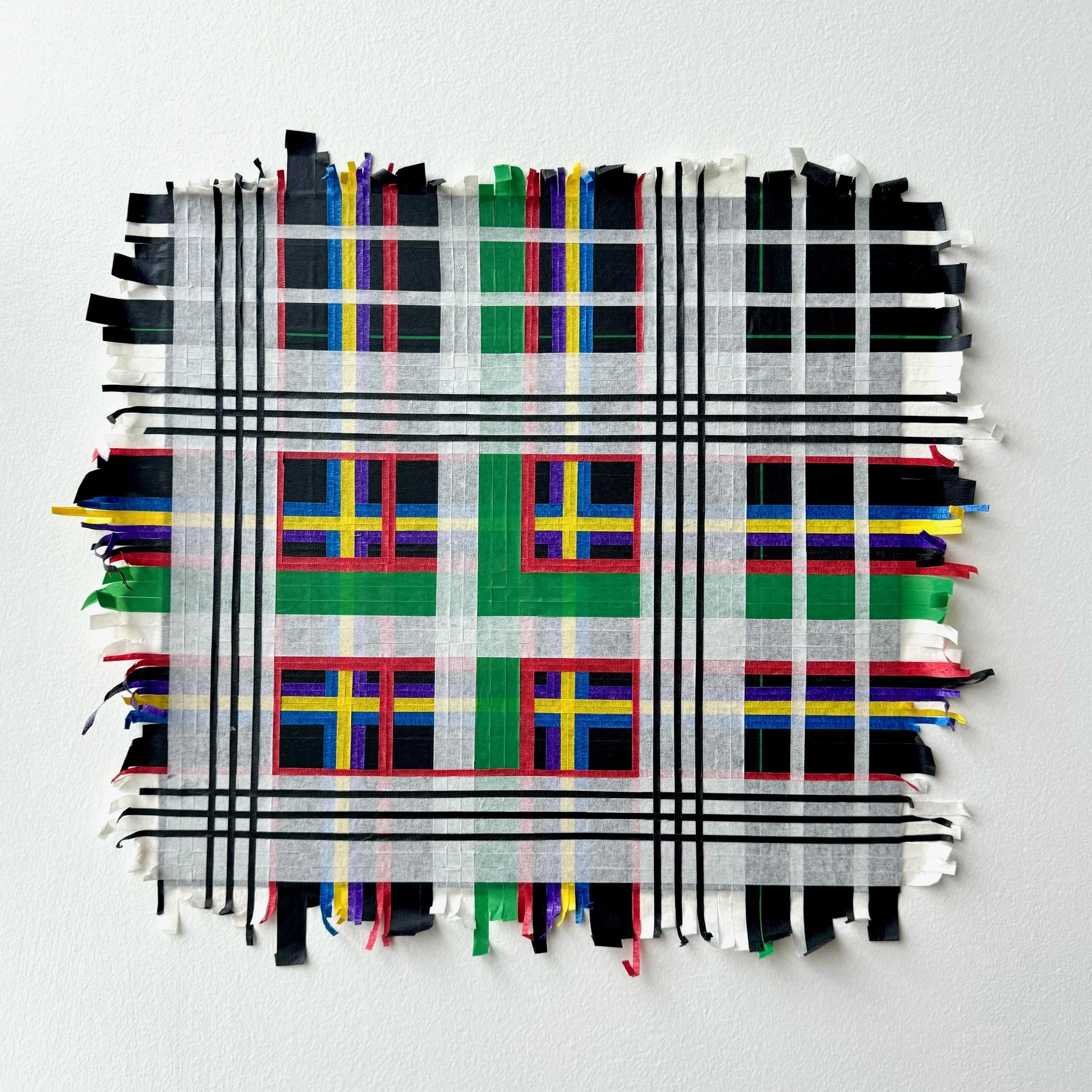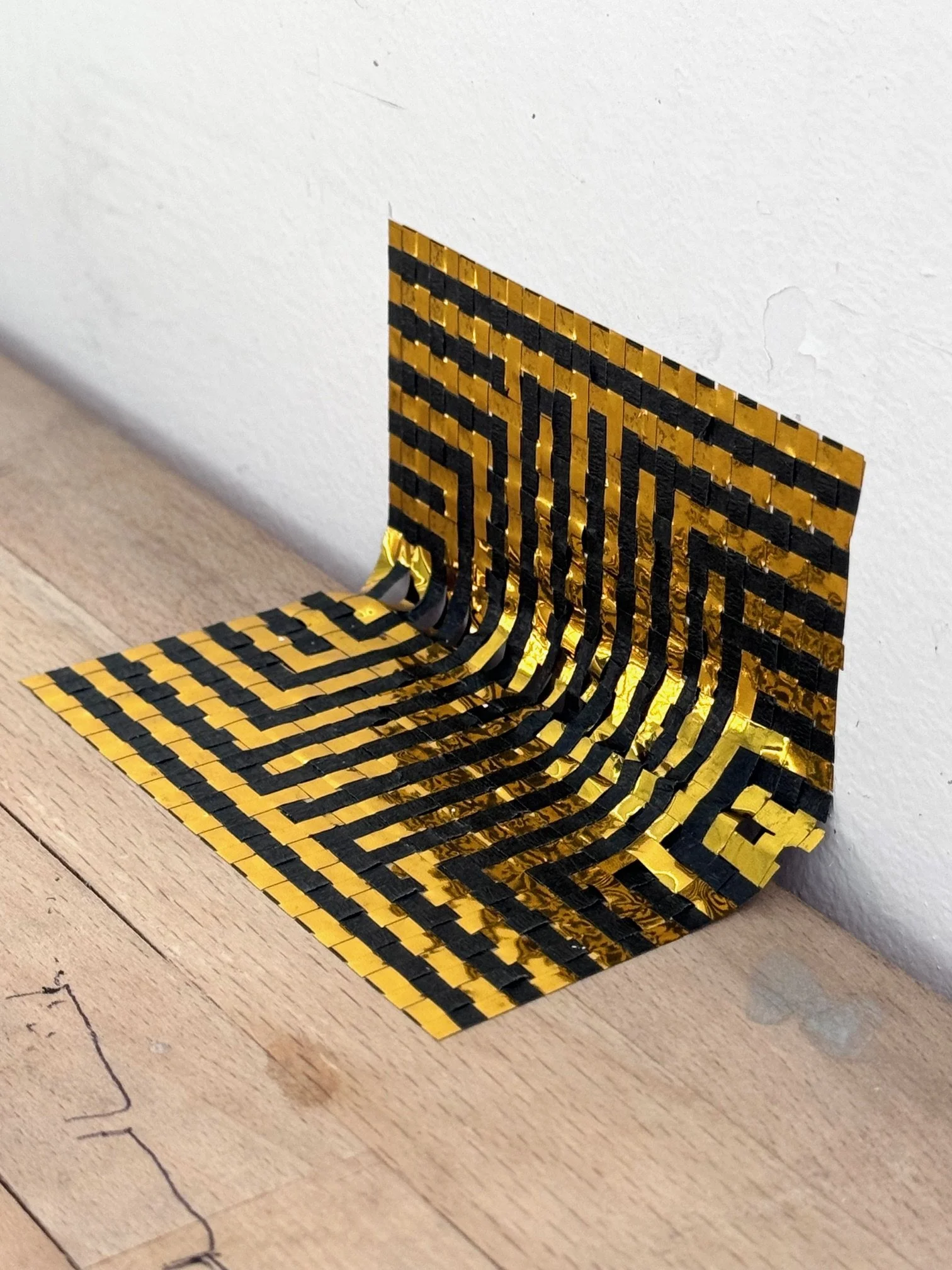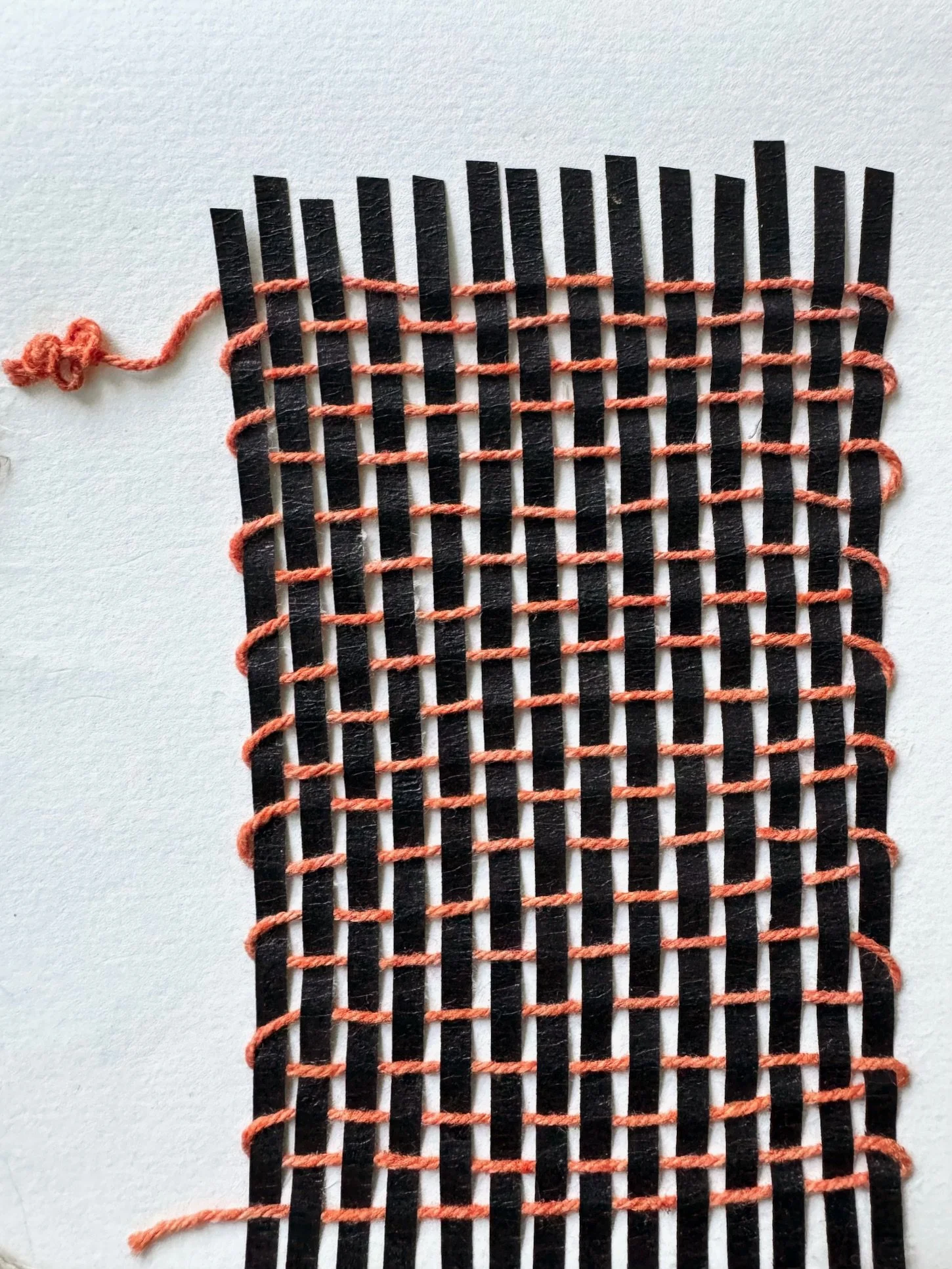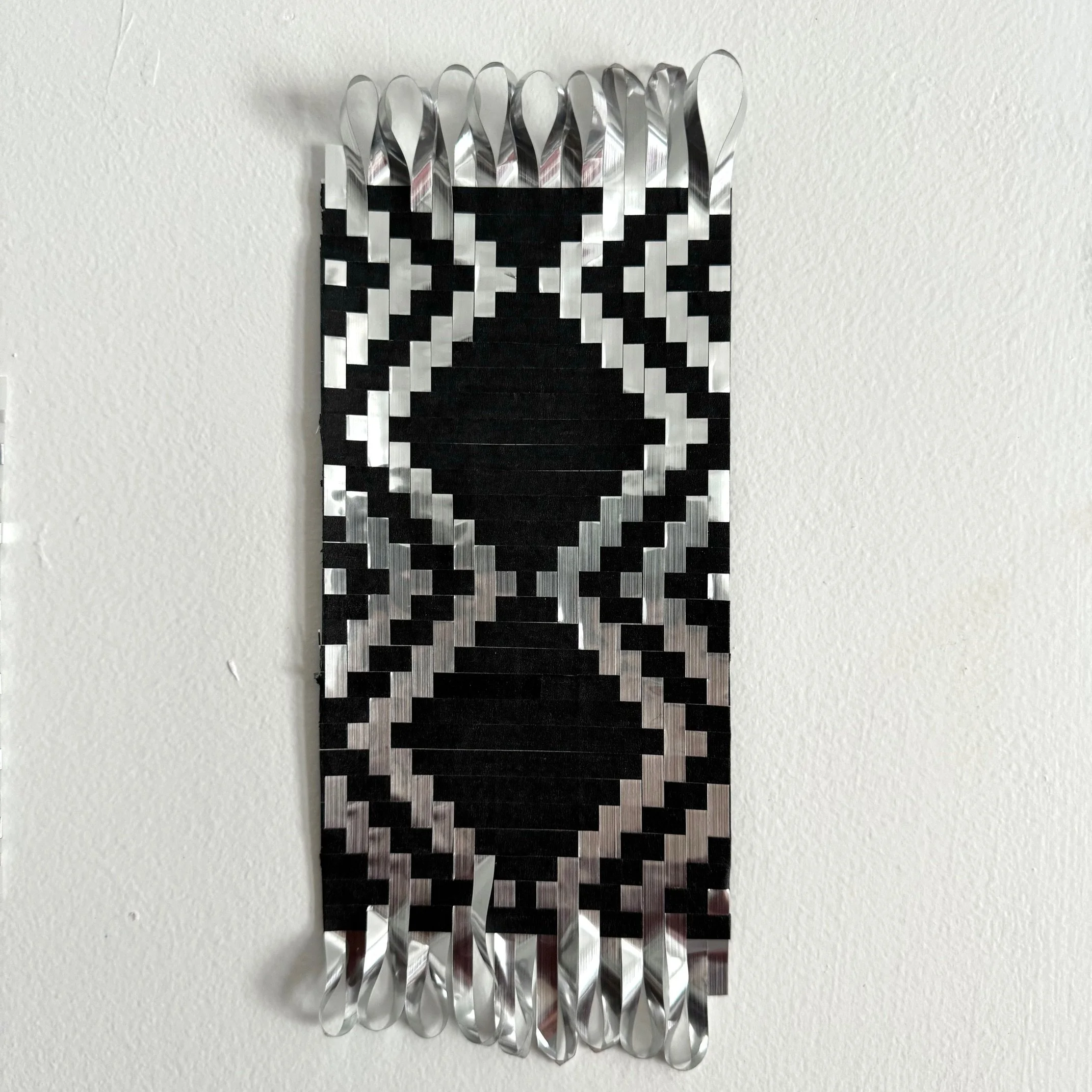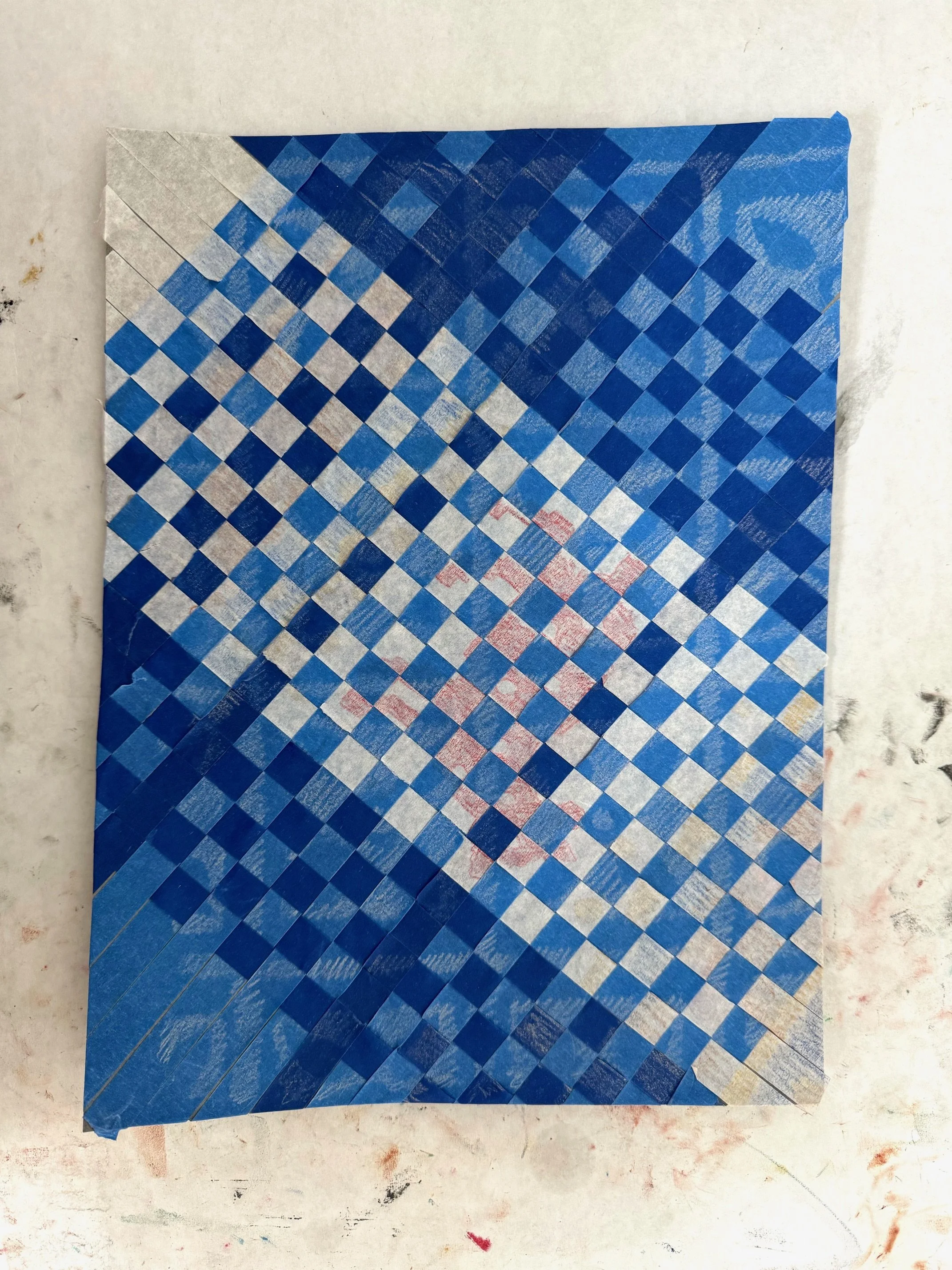Draweaves is a new form of weaving using pressure-sensitive (adhesive) tape to create artworks.
Series
Draweaves
Created
2023 - ongoing
Medium
Adhesive tape on various surfaces
Dimensions
Varied
―
Draweaves is an umbrella term I have coined to speak about a new medium I am developing, that of weaving with pressure-sensitive (adhesive) tape. “Draweave” is a neologism I have created that combines the words “drawing” with “weaving”. As I develop a visual and structural language using tape, I am also exploring the history of cloth to craft, diaspora, labour and globalization—themes that resonate with my wider practice.
While I was undertaking research into weaving as an art form, it occurred to me that a roll of tape is similar to a stick shuttle or a bobbin, both tools that insert the weft into the warp on a loom. It is here that Draweaves took shape. I began using a small roll of paper tape to create a basic weave using the stickiness of the tape to create tension on an improvised “loom”. This experiment has had surprising results. Unlike thread and yarn, paper tape is wider and thus creates both an immediate and obvious pattern and a surface on which to draw.
As I continue working with Draweaves, I combine different types of adhesive tape: paper, metallic, and plastic, sometimes also embedding string into the works. Inspired by textile histories, I sometimes recreate recognizable patterns such as Madras checks, Tartans, and various Indian weaves, and at other times I create abstract pieces. The works vary scale, depending on the width of the tape. In making these, I have consistently asked “what can tape do that string can’t?” This question has helped me identify ways that I can work with tape outside the rules of weaving.
Developing a method of weaving with adhesive tape has led me to consider histories of paper and string and the unevenness of their telling. Paper, writing, and the written word have a well-established, popular history that is widely known, honoured, and respected. These technologies and practices are associated with ruling power, patriarchal elite, and colonial domination. They stand in contrast to the significantly older technologies and practices of sewing, weaving, and textile arts. Although these fibre-based crafts held societies together, they were narrated as gendered tools of storytelling and knowledge-sharing rather than objects of power, connection and agreement. These pejoratively labelled “women’s crafts” are gradually being reclaimed by feminist movements as intrinsic to human development and history and not addendums to History with a capital “H”. In fact, if one looks far back enough, it becomes obvious that the first instances of paper were created from pulped and discarded cloth while similarly, the first computers were created through the appropriation of basic weaving principles such as binary code and core rope memory.
As I continue to develop adhesive tape as an artistic medium, I am drawn to its unique and poetic qualities. The “stickiness” of tape lends itself not just to an ability to doubly reinforce a fabric-like surface (through tack and tension), it also suggests ideas of fragility, impermanence, repairability, entanglement, relationality, and deconstruction.
My practice using tape and string is a very physical one. I create work to the scale of my body much the way woven cloth is created to the scale of the loom and the loom is created to the scale of one or two weavers. My body and its somatic states are central to these works.
Similar to a craftsperson, I see a part of this work as honing a skill to be able to express an idea well. I wish to destabilize that prevailing binary between designer and craftsperson where intellectual labour is often attributed to the commissioning artist and manual labour to the commissioned, always mediated by coloniality, class, caste, race, and gender. My ideal scenario is to create a method so robust that I can, one day, bring to fruition the artistic and intellectual vision of a craftsperson and not the other way around.
The word algorithm (a Latinization of 8th century Arabic scholar and mathematician Muhammad ibn Musa al-Khwarizmi) suggests a computational method for creating a particular result, much like binary code instructions for weaving. Algorithm also signifies the late-capitalist technological systems that attempt to control what we see, believe, and feel. As an artist, I am interested in disrupting algorithms as an exercise of loosening threads and reviewing established patterns to imagine contrary cloth. This interruptive practice attempts to annihilate and abolish structures and systems that fail to create ideal outcomes.
Unlike monumental architecture, textile in its approachability has routinely been made invisible, inconsequential. Like architecture however, textile is collectively constructed with the work of many hands, beliefs, and cultures. While architecture suffers from the attempt to banish, demolish, demonize oneself from an other, textile can endure no such fate. Its threads are so closely intermingled that any attempt to remove one set from another will inevitably lead to the total disintegration of the cloth itself. This to me is a good-enough metaphor for my interest in working with a system of warp and weft, albeit in odd ways that presuppose and foreground atypical futures.
